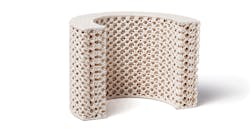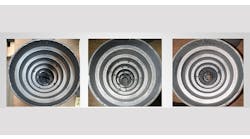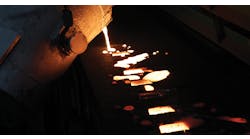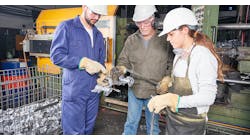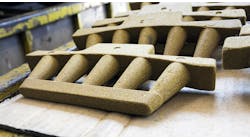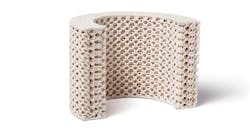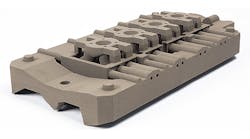Latest from Ask the Expert
There are two potential warm-box binder platforms that can be paired with different latent catalysts to meet the needs of any furan warm-box application and offer potential improvement. One platform, call it Platform 1, offers long bench times due to hot sand, better through-cure for durability and core yield, high humidity resistance and strength, and good release. For superior hot strength, low-warpage, and near-zero nitrogen, the other binder platform, Platform 2, may be a better option.
Both of these binder systems can be used with various latent catalysts to achieve optimal performance when applied properly to a specific process. Many factors will impact product selection: equipment layout, sand chemistry, tooling temperature and dwell time, warpage and dimensional accuracy requirements, strength and handling needs, EH&S requirements and concerns, and downstream process necessities.
Workers on the floor are a foundry’s greatest resource, and you will want to protect them by using chemical binders safely, sustainably, and responsibly. With any modified furan warm-box resin, the most important health hazard to be considered is the toxicity of the binder components. Furfuryl alcohol is the largest contributor to this toxicity, but there are other components that must be managed properly and minimized.
Unlike many of the older warm-box technologies currently available, ASK Chemicals’ CHEM-REZ WB 940 warm-box resin is an example of a Platform 1 system that contains low levels of free formaldehyde, making it an excellent alternative to existing materials.
An example of a Platform 2 resin system, ASK Chemicals’ CHEM-REZ WB 950 warm-box resin has non-reportable levels of formaldehyde. Phenol is another chemical of concern, and it is present at low levels in any phenolic-modified furan. In order to eliminate any worker exposure to phenol, a phenol-free binder system such as the WB 940 would be an appropriate choice.
As an additional layer of protection to workers and the environment, make sure whatever warm-box products you consider are 100% BPA-free.
Depending on your foundry’s tolerance for change and the improvements required in casting quality, productivity, or regulatory improvement, you may wish to consider other coremaking technologies. Work closely with casting technology experts who can help you mitigate the risks associated with any potential change in technology, and more important, can help you assess improvement to your bottom line.
Join the Conversation. Email Your Questions for ASK Chemicals
Share your insights, opinions, and elaborate on the questions and the experts' answer(s). You must be logged in to the website in order to post your comments.
